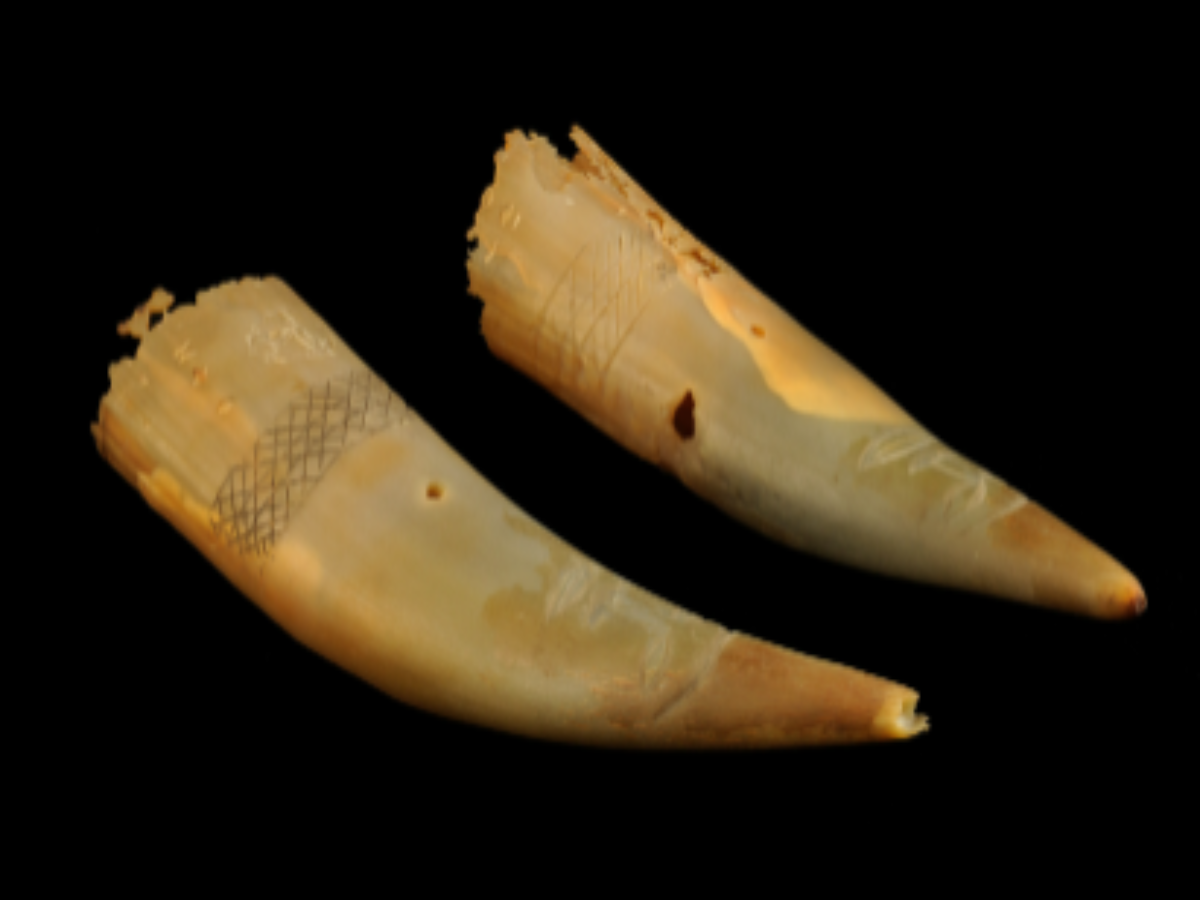State
Tribe Name
Art Type
short description
Striking horn mugs are artifacts belonging to the tradition of Konyak Naga tribe, which has been one of the most famous and culturally rich tribes of Nagaland, the state which lies, in Northeastern India. The Konyaks, who, in ancient times were famous for their warrior tradition and headhunting ways, now are also famous artisans for wood, bone, and horn carving. These two mugs are made of animal horn, each with geometric designs that are highly polished and are said to reflect tribal symbolism and aesthetics. Each horn has engravings of a human face, probably signifying either ancestral spirits, warriors, or symbolic guardians. The facial carvings are one of the most common motifs in Konyak art, usually used to invoke strength and protection or to show respect toward one's lineage.
Thumbnail

Filter Postion
Left
Filter Background
Off
Theme
Filter Header Image

content
Image

description
Striking horn mugs are artifacts belonging to the tradition of Konyak Naga tribe, which has been one of the most famous and culturally rich tribes of Nagaland, the state which lies, in Northeastern India. The Konyaks, who, in ancient times were famous for their warrior tradition and headhunting ways, now are also famous artisans for wood, bone, and horn carving. These two mugs are made of animal horn, each with geometric designs that are highly polished and are said to reflect tribal symbolism and aesthetics. Each horn has engravings of a human face, probably signifying either ancestral spirits, warriors, or symbolic guardians. The facial carvings are one of the most common motifs in Konyak art, usually used to invoke strength and protection or to show respect toward one's lineage.
These types of horn mugs were traditionally used during tribal feasts, rituals, and functions within the community, most notably to drink rice beer or other beverages in ceremonies. The use of horn signifies strength and resilience, while the engravings speak of the link with ancestry, spiritual beliefs, and social identity. These mugs are, however, more than just drinking vessels; they are a kinsmix of utility and artistry and meaning, carrying the legacy of a community deeply rooted in tradition. Today such items are preserved as ethnographic artifacts, being celebrated for their special craftsmanship and the historical importance attached to them in the tribal heritage of Nagaland.
These types of horn mugs were traditionally used during tribal feasts, rituals, and functions within the community, most notably to drink rice beer or other beverages in ceremonies. The use of horn signifies strength and resilience, while the engravings speak of the link with ancestry, spiritual beliefs, and social identity. These mugs are, however, more than just drinking vessels; they are a kinsmix of utility and artistry and meaning, carrying the legacy of a community deeply rooted in tradition. Today such items are preserved as ethnographic artifacts, being celebrated for their special craftsmanship and the historical importance attached to them in the tribal heritage of Nagaland.
Image Mode
landscape
promoted
On
Verified
Off
